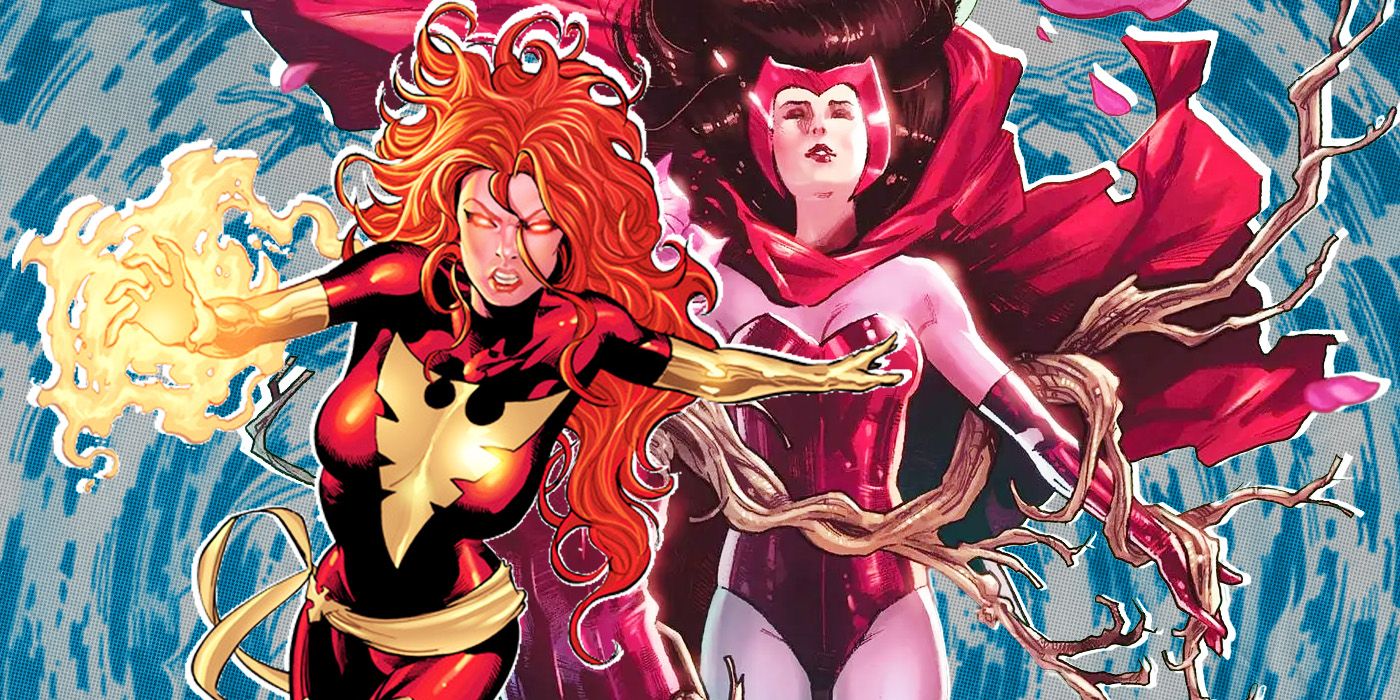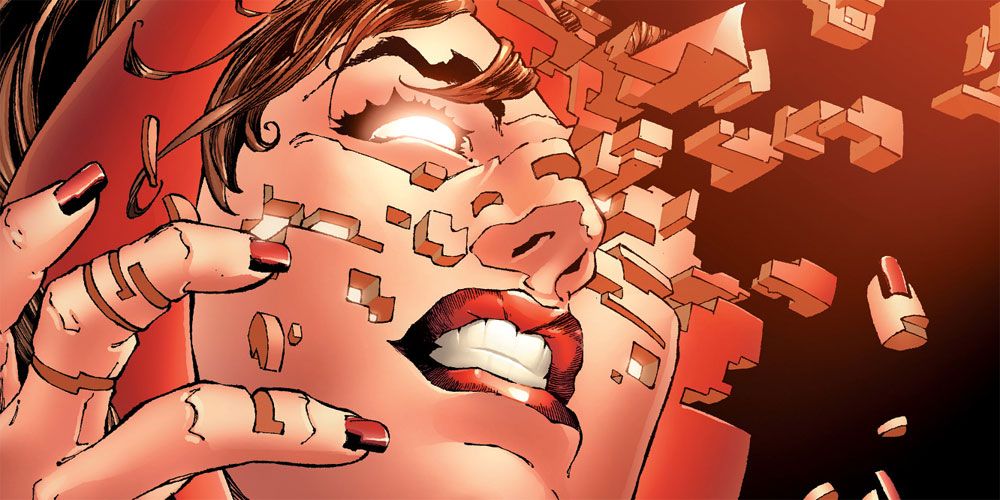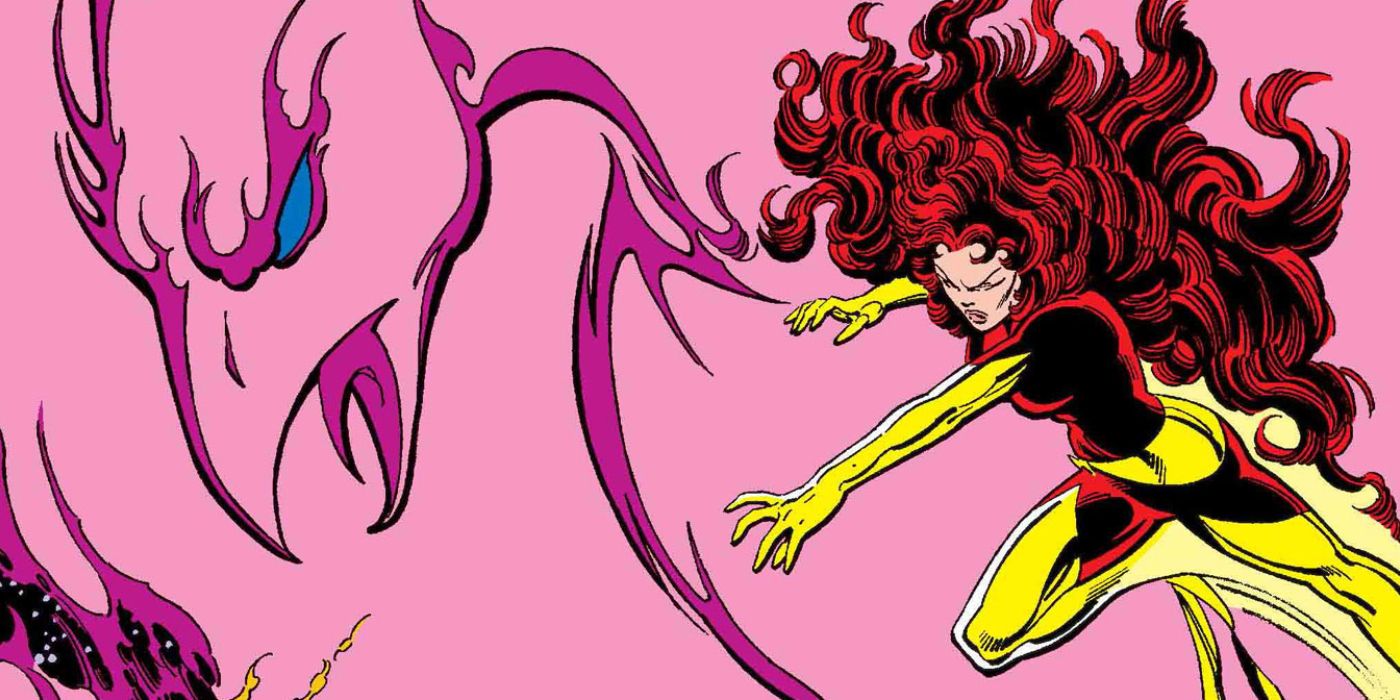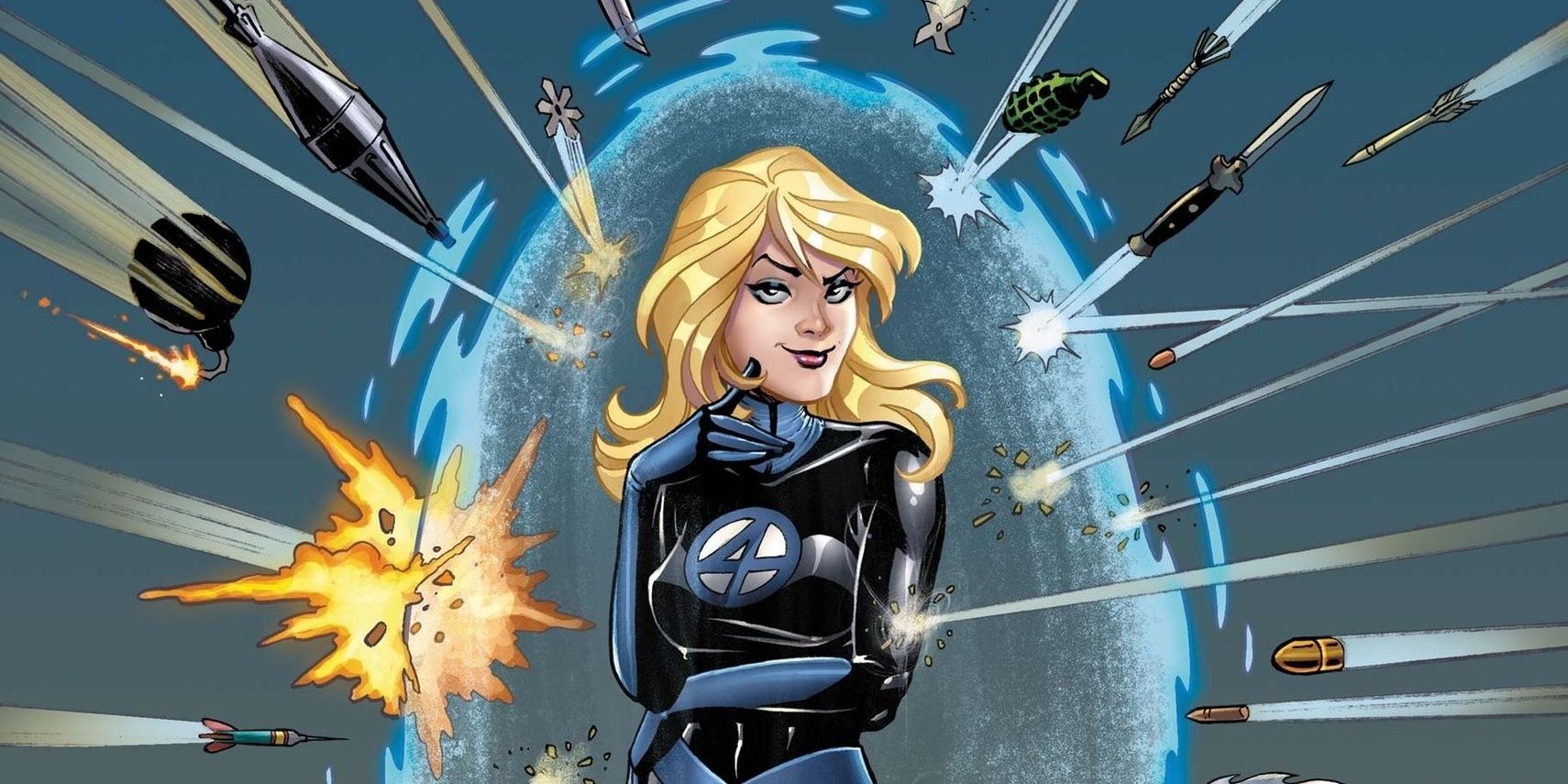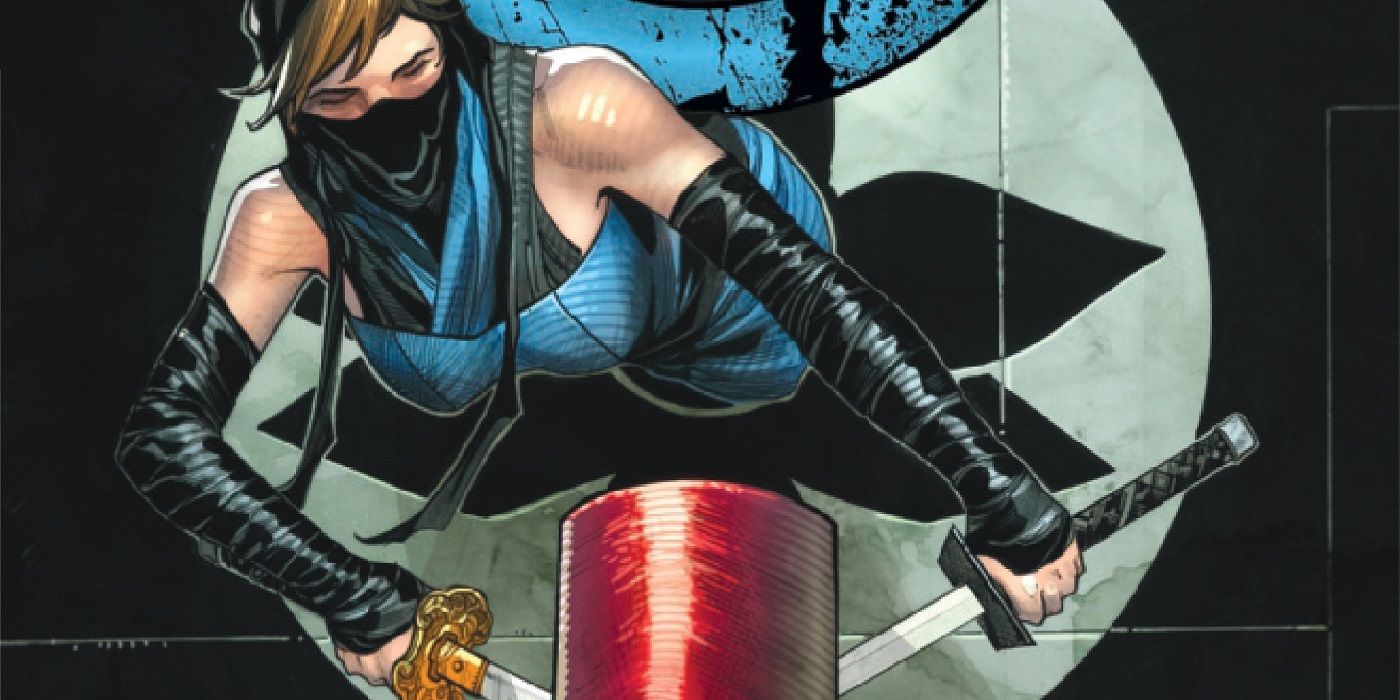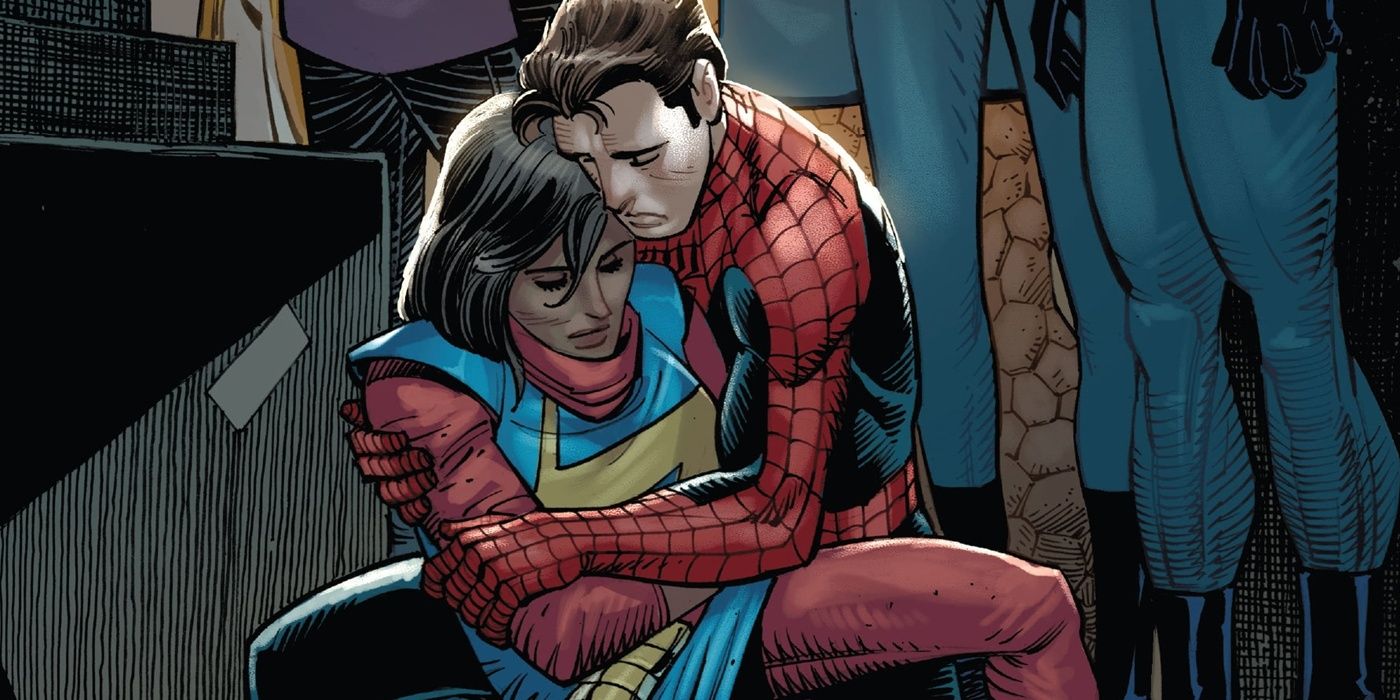Marvel took the superhero game by storm in the ’60s, creating entirely different types of heroes than readers had seen before. Since then, Marvel has been on the cutting edge of superheroes, telling stories their distinguished competition couldn’t. Marvel’s characters often wrestle with their power and responsibilities, something which has endeared them to fans.
However, many longtime fans of the Marvel Universe have noticed a double standard. Male heroes get to be powerful paragons of virtue, unquestioned even when they’re doing things that are highly unethical. For female heroes, it’s entirely different. Marvel has fostered a double standard. Male heroes and their powers are celebrated, while female heroes and their powers are feared.
The Strange Story Of Scarlet Witch
Scarlet Witch is extremely powerful, and has only gotten more so over the years. Wanda Maximoff first appeared as a villainous member in Magneto’s Brotherhood of Evil Mutants before joining the Avengers. Her powers allowed her to cast hexes that messed with the laws of probability. This also gave her the power to manipulate magical energy, and she trained with powerful magic users like Agatha Harkness. As Scarlet Witch got more powerful, though, something odd started happening.
Scarlet Witch became the focus of stories where she lost control of her powers. She was portrayed as the most powerful of the Avengers, yet she was also the most fragile, and that didn’t mean physically fragile. Scarlet Witch’s power creep always went upwards, but she was always portrayed as mentally weak, unable to control her ever-increasing power levels.
Scarlet Witch would go through phases where she didn’t have a breakdown, but whenever a writer needed some drama, it was time for Wanda Maximoff to “lose control” and attack the Avengers. This came to a head with stories like Avengers Disassembled and House of M, where Scarlet Witch’s godlike powers broke her fragile psyche. It took years for Wanda to recover. One gets the impression that if it wasn’t for the popularity of the MCU’s Scarlet Witch, she’d still be going through the endless cycle of breaking down and fighting her friends.
From The Ashes
Jean Grey is known for cheating death, a reputation she got when she became the host of the Phoenix Force. Everyone knows how this story goes. After being captured by the Hellfire Club and manipulated by Mastermind, Phoenix broke and became Dark Phoenix. She consumed a star and destroyed a solar system, fought the X-Men, and then came back from the brink and killed herself to stop the Phoenix from devouring the universe. Eventually, Marvel brought Jean Grey back, but in a way that completely absolved her of the Phoenix’s wrongdoings. After the retcon, Jean was never the host of the Phoenix Force; instead, the Phoenix Force created a body just like hers and put Jean into stasis, choosing to experience life as a human.
So, Jean was never actually Phoenix, but that didn’t stop all of her teammates from freaking out about her possibly becoming Phoenix again. Everyone was scared of her for actions that weren’t even her own, something that came to a head when she actually regained the power of the Phoenix Force. However, instead of breaking down and destroying all reality, Jean Grey proved she could handle its power, using it to save the day and defeating Xorn before dying. Jean Grey not only rose from the ashes of the Dark Phoenix, but when given the first chance, she proved the literal years of the X-Men being afraid of her and her powers weren’t necessary. Of course, that didn’t change the way creators had Jean treated in stories for years.
Marvel Has A Problem With Powerful Women
Jean Grey and Scarlet Witch both are an example of Marvel’s tragic double standard. They’re both the most powerful members of their team, yet they’re the ones everyone fears — and not because of how formidable they are, but because they might lose control. They’re the ones who can’t handle their powers and break down attacking their friends. That’s not to say that male superheroes don’t do this. The Hulk is a volatile powerhouse, but that was established right from the beginning. Characters like Jean Grey and Scarlet Witch weren’t created to be cautionary tales about nuclear weapons. They were just female superheroes, and they got off lucky compared to Invisible Woman.
Anyone who’s read a Silver Age Marvel comic knows that the writers back then didn’t exactly write women well. Invisible Woman remains the perfect example of that. She was basically the team mom and a built-in hostage. Her power was literally the ability to be invisible, and she was mostly useless in the battles the Fantastic Four fought. Invisible Woman later received a massive power upgrade, but for years, she was the den mother of the Fantastic Four — nagging Reed, doing housework, and being treated like garbage while always smiling.
Carol Danvers, now Captain Marvel but then Ms. Marvel, had the terrible rape story from Avengers #200 (by James Shooter, George Pérez, Bob Layton, David Michelinie, Dan Green, Ben Sean, and John Costanza). Additionally, many stories involved other people messing with Captain Marvel’s powers or the consequences that occurred when they went haywire. These are examples of Marvel’s most powerful women getting the short end of the stick. Even Storm, who was relatively well-treated, still had her powers stolen from her and would lose control of her abilities because of her claustrophobia.
Compare that to Marvel’s men. The Silver Surfer is a Zen powerhouse, whose powers are akin to those of a god. He can mold and shape matter to whatever form he desires and is powerful enough to fight off Thor with little effort. He literally is complicit in genocide on an incalculable scale, yet he’s played as a noble hero. The Vision once decided he should rule the world and took control of NORAD before the Avengers stopped him, yet he always gets played as the Avengers’ Spock — the nonhuman character trying to figure out what it means to be human. Professor X can use his mental powers to talk to every person on Earth at once and is considered the most powerful telepath in the universe. He’s also known for lying to his students and mindwiping them when it suits his goals, yet he constantly has the love and trust of the people he has hurt over the years.
Loki is a reformed villain who has almost conquered the world multiple times, yet everyone has bought into his redemption. Marvel’s gone out of their way to make Loki a hero. Even when he’s evil, they work to make sure readers know he’s not all that bad. Magneto gets a pass for years of terrorism and being a terrible father who used Scarlet Witch and Quicksilver because he has a tragic backstory. Iron Man betrayed his best friends and went full fascist, missing the Skrull invasion happening under his nose because he was too busy trying to throw his friends in jail. These characters are extremely powerful and all of them have serious skeletons hanging in their closet. Yet none of them gone through cycles of stories where no one trusted them or questioned their motives. None of them have had to face the consequences of their actions. None of them were feared for their powers and abilities by the heroes around them.
The More Things Change The More They Stay The Same
Wolverine is a killer. The character’s place in the X-Men’s hierarchy is that he’s the one who does what other members wouldn’t. He’s trained multiple X-Men, including Kate Pryde. The youngest member of the X-Men, Kate became a ninja thanks to Wolverine and is among the toughest heroes out there. Recently, in X-Men (Vol. 6) #25 (by Gerry Duggan, Stefano Caselli, and Marte Gracia), Kate killed members of the Orchis Initiative after their attack on her fellow mutants. She’s since become known as Shadowkat, combining her old ’90s code name with her real name, and her team members are all worried about her because of all the killing she’s done. This change is played as a loss of innocence and a problem. Kate Pryde is using her powers and training to do the same things that Wolverine does. However, she’s the one getting questioned for it, while he gets lauded.
This is another double standard when it comes to Marvel heroes. Male heroes can use extreme violence, but female heroes get questioned for it. Even though Marvel has many prominent female superheroes, there’s still a massive contradiction in the way they treat male and female superheroes. Male heroes get to be powerful and virtuous. Female heroes get to be powerful or virtuous, but the more powerful they are, the more stories they’ll have where they become evil and attack their friends.
Marvel has definitely made a lot of strides forward when it comes to male and female superheroes. Superheroines have reached new levels of importance in the Marvel Universe, particularly on the X-Men side of things. Marvel has multiple comics out there that are centered on women and the company is better for it. However, that doesn’t change the tropes that creators at Marvel use for female superheroes. One simply needs to look at Ms. Marvel’s recent death in The Amazing Spider-Man, a completely useless death that only mattered because of what it meant to the male superhero who she died working with.
Many of the things that happen to female superheroes have happened to male ones. The difference is that for the women, it’s a common part of their stories. Scarlet Witch and Jean Grey are the two most popular examples, but they aren’t the only ones. Marvel’s women have been marginalized and stereotyped for years and now are trotted out to show the company’s diversity while Marvel editorial lets creators make terrible decisions with them. It’s a massive double standard, and it’s one that Marvel and its fans need to take a look at. No one needs anymore “can’t control her powers because she has emotions” storylines. Marvel needs to take some big steps if they want to move away from their imbalanced tropes.
